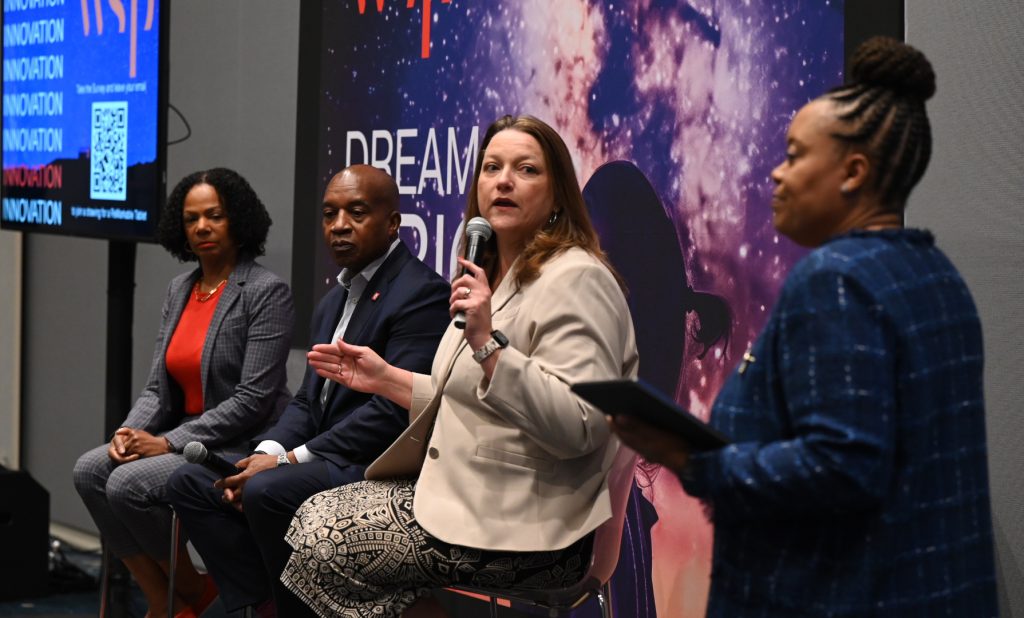Future Vision: CEOs Talk Technology, Innovation, and Lessons Learned
4/10/2025

Driving innovation, especially in a large, established public transit agency, takes courage. Growing an innovative company culture can be difficult and expensive, but that is the job for transit leaders.
Speaking at the CEO Chats: Dream Big Discussions session at the 2025 Mobility Conference, Jacksonville Transportation Authority CEO Nathaniel P. Ford Sr. said, “I’m not in the transit business. I’m in the mobility business.… If it moves people, it’s my business and I’ll use any tool that custom fits to that service delivery model.”
Any tool, Ford continued, includes autonomous vehicles, artificial intelligence, machine learning, emerging technological advances, and collaborating with or investing in other transit partners to help people get around.
Sharing the panel with Ford was Denver Regional Transportation District General Manager and CEO Debra Johnson, and Dottie Watkins, CEO of host agency Capital Metropolitan Transportation Authority. The three discussed with moderator Inez Evans Benson, senior vice president, deputy transit and rail leader, WSP, where innovation comes from, and what it can lead to.
Sustainable innovation is a product of having the right people and partners in place, panelists agreed. Ford’s agency has strategically hired experienced people to advance its technology and paid the required salaries for that leadership.
Johnson saw the top of the organization chart as the start of innovation. “I think it’s incumbent upon the CEO to set that visionary pathway forward,” she said, and to bring people along on the journey. Her agency’s updated security model, developed with help from the city of Denver, for example, has benefited both the transit and city police agencies.
Innovation, though, can be messy. Panelists shared stories of bus procurement challenges, and autonomous solution test projects that failed for myriad reasons, including vehicles that could not accommodate passenger needs, and those stopping dead at the first snowflake or tumbleweed to appear.
“But when you innovate, that’s part of the process,” Watkins said. “We need to help people understand that we’re not always going to get it right the first time…. We’re going to try this thing and we’re either going to succeed or we’re going to learn, and, one way or another, we will be better off for having tried this thing.”
Artificial intelligence offered countless possibilities. Panelists envisioned monetizing data collected, predictive behavior analysis, and incident reporting enhancements to improve transit for riders and communities alike, plus AI-generated board reports and presentation talking points.
Ford urged agencies to be open to the improvements possible with technology advances. He acknowledged “One size doesn’t fit all,” but for agencies seeking federal funding, “We need to tout that we’re willing to accept and look at these new technologies that will make us more efficient and more effective.”